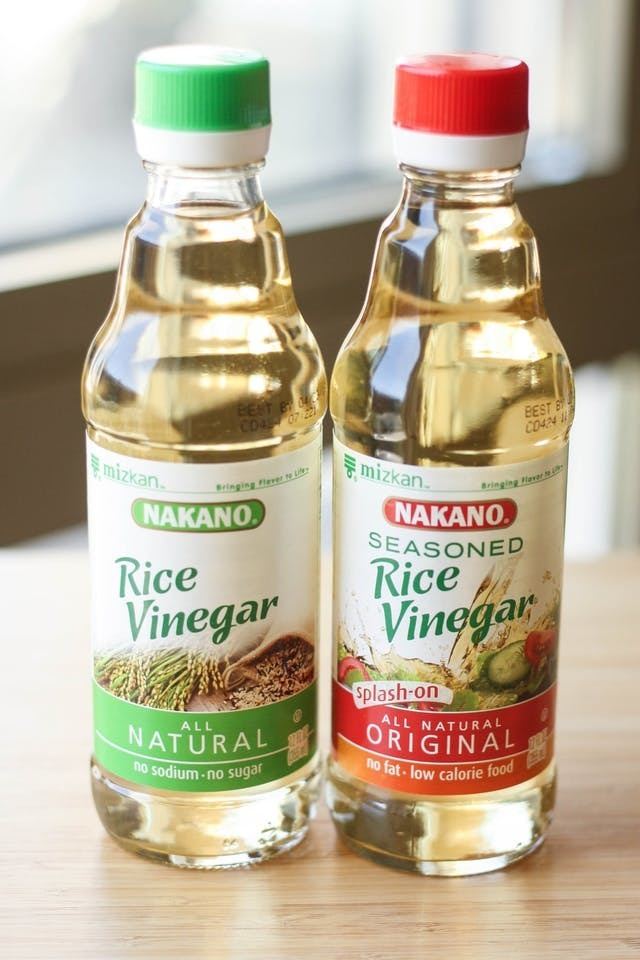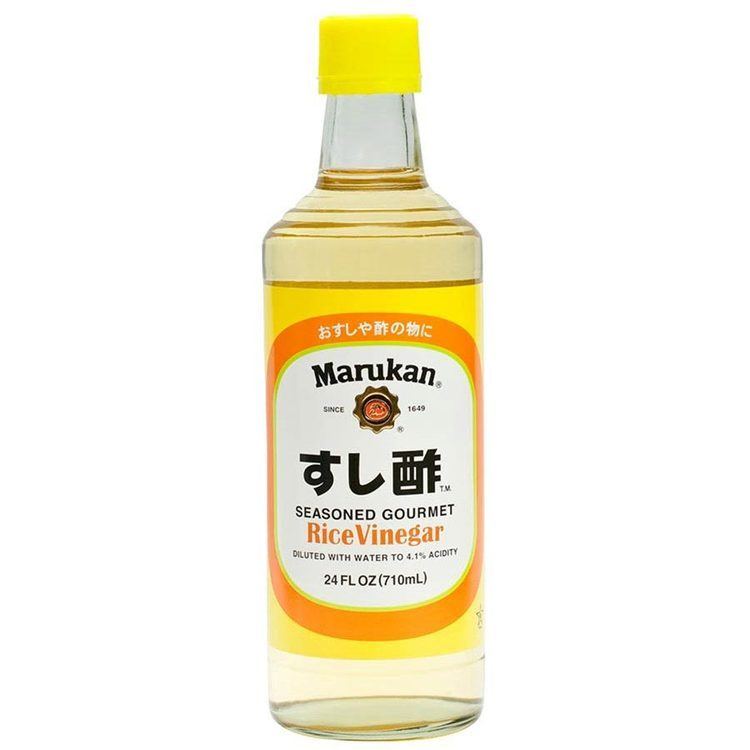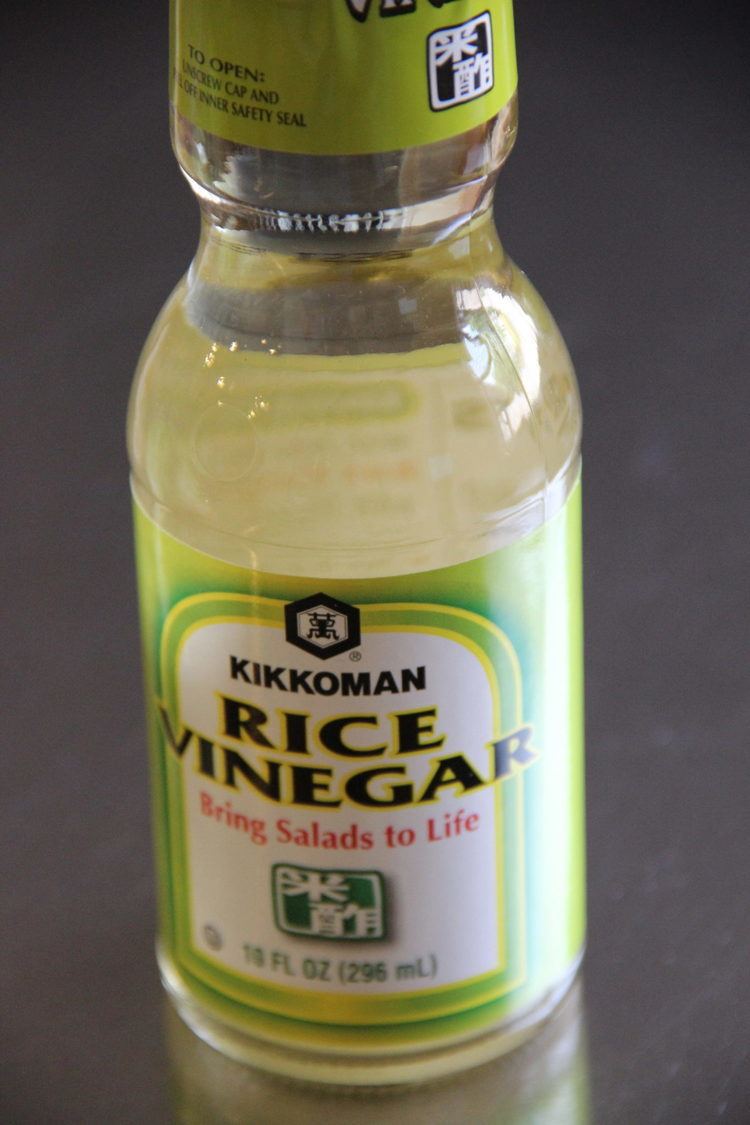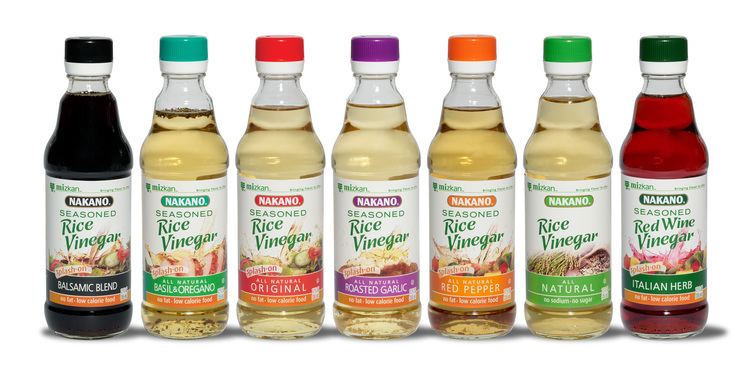Similar Rice wine, Vinegar, Soy sauce, Mirin, Scallion | ||
How to cook sushi rice prepare sushi rice vinegar
Rice vinegar is a vinegar made from fermented rice or rice wine in China, Japan, Korea, and Vietnam.
Contents
Chinese

Chinese rice vinegars are stronger than Japanese ones, and range in colour from clear to various shades of red, brown and black. Chinese and especially Japanese vinegars are less acidic than the distilled Western vinegars which, for that reason, are not appropriate substitutes for rice vinegars. The majority of the Asian rice vinegar types are also more mild and sweet than vinegars typically used in the Western world, with black vinegars as a notable exception. Chinese rice vinegars are made from huangjiu, a type of rice wine.
Types

White rice vinegar is a colourless to pale yellow liquid, higher in acetic acid than other Chinese vinegars, but still less acidic and milder in flavour than Western vinegars.

Black vinegar is very popular in southern China. Chinkiang Vinegar, which originated in the city of Zhenjiang (Chinese: 镇江香醋; pinyin: Zhènjiāng xiāngcù) in the eastern coastal province of Jiangsu, is considered the best of the black rice vinegars. Normally black rice vinegar is made with black glutinous rice (also called "sweet rice"), although millet or sorghum may be used instead. It is dark in colour, and has a deep, almost smoky flavour. In addition to Zhenjiang, it is also produced in Hong Kong. This is different from the black vinegar popular in north China, which is made from sorghum, peas, barley, bran, and chaff and is most associated with Shanxi province.

Red rice vinegar has a distinctive red colour from Red yeast rice (红曲米), which is cultivated with the mold Monascus purpureus. This vinegar has a distinctive flavour of its own due to the red mold.

In Chinese cookbooks, ½ tablespoon of Western distilled white vinegar is stated to be equivalent in strength to 1 tablespoon Chinkiang vinegar, and recipes which call for 4 teaspoons of red rice vinegar could be substituted with only 3 teaspoons of white vinegar.
Japanese
Japanese rice vinegar (米酢 komezu, "rice vinegar" or simply 酢 su, "vinegar") is very mild and mellow (Western - e.g., US or UK - vinegars are approximately 5% acetic acid) and ranges in colour from colourless to pale yellow. It is made from either rice or sake lees. These are more specifically called yonezu (米酢 よねず) and kasuzu (粕酢 かすず), respectively. These vinegars are used in making sunomono (酢の物, "vinegar dishes"), tsukemono (漬物, "pickles"), nimono (煮物, "simmered dishes"), as well as in marinades to mitigate the stronger odours of certain fishes and meats.
Seasoned rice vinegar (合わせ酢 awasezu) is made by adding sake, salt and sugar. Additionally, mirin is also sometimes used (but only rarely). Although it can be made at home, prepared awasezu can also be readily bought at supermarkets. Seasoned rice vinegar is added to cooked rice to be used in making sushi. It is also used in salad dressing varieties popular in the west, such as ginger or sesame dressing.
A somewhat lighter form of black vinegar called kurozu (黒酢), made from rice, is produced in Japan. It is considered as a healthy drink; its manufacturers claim that it contains high concentrations of amino acids. Recent scientific research on kurozu has revealed its anti-cancer properties in vivo on rats and in vitro on human cancer cells.
Korean
Ssal sikcho (hangul: 쌀식초, hanja: 쌀食醋) or micho (hangul: 미초, hanja: 米醋) refer to rice vinegar in Korean. Rice vinegar has been favored by Koreans for its good flavor and nutritious element. It is made with rice, chapssal (hangul: 찹쌀, glutinous rice), or hyeonmi (hangul: 현미, hanja: 玄米, brown rice) and mixed with nuruk (hangul: 누룩) which is a Korean fermentation starter.
Vietnamese
Rice vinegar is called dấm gạo or giấm gạo in Vietnamese. One variation of Vietnamese rice vinegar is the spicy and sour giấm bỗng made from nếp cái hoa vàng rice. The most notable place of origin of this kind of vinegar is Vân village, Vân Hà commune, Việt Yên district, Bắc Giang province. Giấm bỗng is an ingredient of vịt om giấm bổng, bún riêu, and bún ốc.
Another rice vinegar is the lightly sour hèm, used in ốc bươu hấp hèm and gà hấp hèm which is a specialty of Hóc Môn district, Ho Chi Minh city. The mẻ rice vinegar, which is strongly sour, is used in trâu luộc mẻ—-a speciality of Cần Thơ city.
